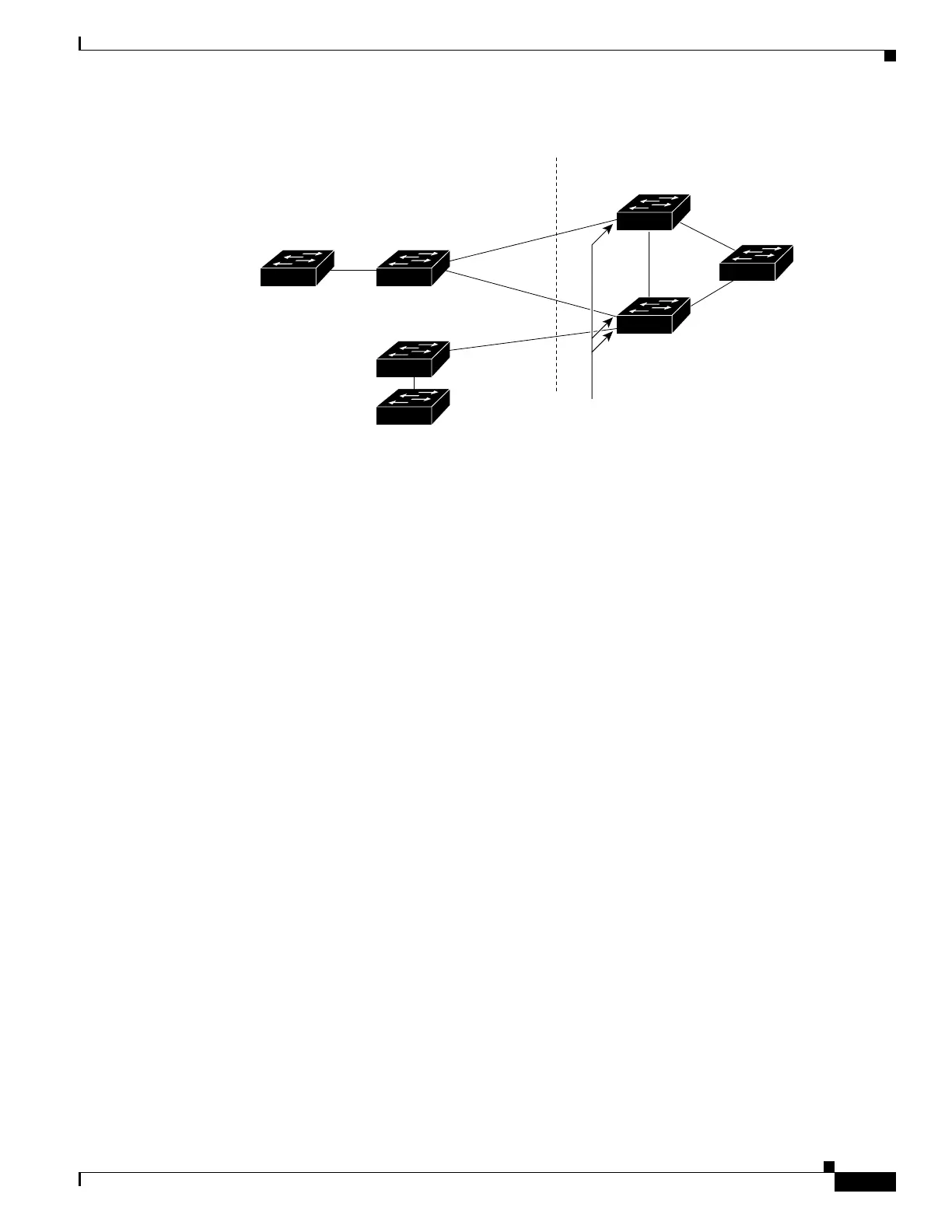1-11
Catalyst 3750-X and 3560-X Switch Software Configuration Guide
OL-25303-03
Chapter 1 Configuring Optional Spanning-Tree Features
Configuring Optional Spanning-Tree Features
Figure 1-9 Root Guard in a Service-Provider Network
Understanding Loop Guard
You can use loop guard to prevent alternate or root ports from becoming designated ports because of a
failure that leads to a unidirectional link. This feature is most effective when it is enabled on the entire
switched network. Loop guard prevents alternate and root ports from becoming designated ports, and
spanning tree does not send BPDUs on root or alternate ports.
You can enable this feature by using the spanning-tree loopguard default global configuration
command.
When the switch is operating in PVST+ or rapid-PVST+ mode, loop guard prevents alternate and root
ports from becoming designated ports, and spanning tree does not send BPDUs on root or alternate ports.
When the switch is operating in MST mode, BPDUs are not sent on nonboundary ports only if the
interface is blocked by loop guard in all MST instances. On a boundary port, loop guard blocks the
interface in all MST instances.
Configuring Optional Spanning-Tree Features
These sections contain this configuration information:
• Default Optional Spanning-Tree Configuration, page 1-12
• Optional Spanning-Tree Configuration Guidelines, page 1-12
• Enabling Port Fast, page 1-12 (optional)
• Enabling BPDU Guard, page 1-13 (optional)
• Enabling BPDU Filtering, page 1-14 (optional)
• Enabling UplinkFast for Use with Redundant Links, page 1-15 (optional)
• Enabling Cross-Stack UplinkFast, page 1-16 (optional)
101232
Desired
root switch
Customer network
Potential
spanning-tree root without
root guard enabled
Enable the root-guard feature
on these interfaces to prevent
switches in the customer
network from becoming
the root switch or being
in the path to the root.
Service-provider network

